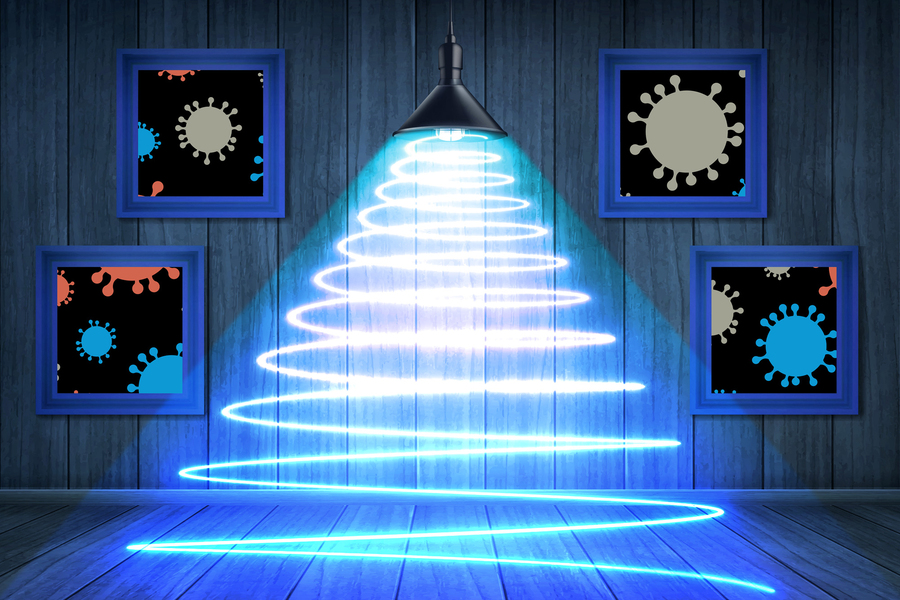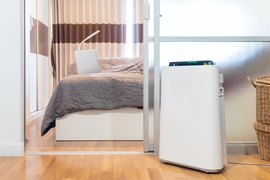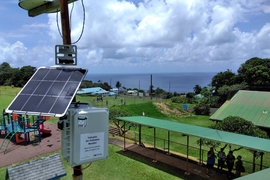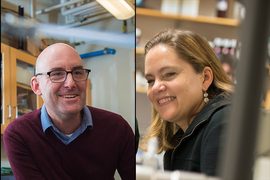Many efforts to reduce transmission of diseases like Covid-19 and the flu have focused on measures such as masking and isolation, but another useful approach is reducing the load of airborne pathogens through filtration or germicidal ultraviolet light. Conventional UV sources can be harmful to eyes and skin, but newer sources that emit at a different wavelength, 222 nanometers, are considered safe.
However, new research from MIT shows that these UV lights can produce potentially harmful compounds in indoor spaces. While the researchers emphasize that this doesn’t mean the new UV lights should be avoided entirely, they do say the research suggests it is important that the lights have the right strength for a given indoor situation, and that they are used along with appropriate ventilation.
The findings are reported in the journal Environmental Science and Technology, in a paper by recent MIT postdoc Victoria Barber, doctoral student Matthew Goss, Professor Jesse Kroll, and six others at MIT, Aerodyne Research, and Harvard University.
While Kroll and his team usually work on issues of outdoor air pollution, during the pandemic they became increasingly interested in indoor air quality. Usually, little photochemical reactivity happens indoors, unlike outdoors, where the air is constantly exposed to sunlight. But with the use of devices to clean indoor air using chemical methods or UV light, “all of a sudden some of this oxidation is brought indoors,” triggering a potential cascade of reactions, Kroll says.
Initially, the UV light interacts with oxygen in the air to form ozone, which is itself a health risk. “But also, once you make ozone, there’s a possibility for all these other oxidation reactions,” Kroll says. For example, the UV can interact with the ozone to produce compounds called OH radicals, which are also powerful oxidizers.
Barber, who is now an assistant professor at the University of California at Los Angeles, adds, “If you have volatile organic compounds in the environment, which you do basically in all indoor environments, then these oxidants react with them and you make these oxidized volatile organic compounds, which in some cases turn out to be more harmful to human health than their unoxidized precursors.” The process also leads to the formation of secondary organic aerosols, she says. “Again, this stuff is harmful to breathe, so having it in your indoor environment is not ideal.”
The formation of such compounds is particularly problematic in the indoors, Kroll says, because people spend so much of their time there, and low ventilation rates can mean these compounds could accumulate to relatively high levels.
Having studied such processes in outdoor air for years, the team had the right equipment in hand to observe these pollution-forming processes indoors directly. They carried out a series of experiments, first exposing clean air to the UV lights inside a controlled container, then adding one organic compound at a time to see how they each affected the compounds that were produced. Although further research is needed to see how these findings apply to real indoor environments, the formation of secondary products was clear.
The devices that make use of the new UV wavelengths, called KrCl excimer lamps, are still relatively rare and expensive. They’re used in some hospital, restaurant, or commercial settings rather than in homes. But while they have sometimes been touted as a substitute for ventilation, especially in hard-to-ventilate older buildings, the new study suggests that’s not appropriate. “Our big finding was that these lights are not a replacement for ventilation, but rather a complement to it,” says Kroll, who is a professor of civil and environmental engineering, and of chemical engineering.
Some have proposed that with these devices, “maybe if you could just deactivate the viruses and bacteria indoors, you wouldn’t need to worry about ventilation as much. What we showed is that, unfortunately, that’s not necessarily the case, because when you have less ventilation, you get a buildup of these secondary products,” Kroll says.
He suggests a different approach: “There may be a sweet spot in which you’re getting the health benefits of the light, the deactivation of pathogens, but not too many of the disbenefits of the pollutant formation because you’re ventilating that out.”
The results so far are from precisely controlled lab experiments, with air contained in a Teflon bag for testing, Barber points out. “What we’re seeing in our bag is not necessarily directly comparable to what you would see in a real indoor environment,” she says, “but it does give a pretty good picture of what the chemistry is that can happen under radiation from these devices.”
Goss adds that “this work allowed us to validate a simple model that we could plug in parameters to that are more relevant to actual indoor spaces.” In the paper, they use this information “to try to apply the measurements we’ve taken to estimate what would happen in an actual indoor space.” The next step in the research will be to attempt follow-up studies taking measurements in real-world indoor spaces, he says.
“We’ve shown that these are a potential concern,” Kroll says. “But in order to understand what the full real-world implications are, we need to take measurements in real indoor environments.”
“These 222-nanometer radiation devices are being deployed in bathrooms, classrooms, and conference rooms without a full accounting of the potential benefits and/or harm associate with their operation,” says Dustin Poppendieck, a research scientist at the National Institute for Standards and Technology, who was not associated with this study. “This work lays the foundation for a proper quantification of potential negative health impacts of these devices. It is important this process is completed prior to relying on the technology to help prevent the next pandemic.”
The work was supported by the National Science Foundation, the Harvard Global Institute, and an NIEHS Toxicology Training Grant.












